Methane Plasmalyzer®
The Plasmalyzer® is an innovative technology for producing hydrogen through a process called methane-plasmalysis, which differs from pyrolysis in that it uses its plasma catalytic capabilities at high temperatures exceeding 1300°C, which is a key difference compared to pyrolysis.. This technology is unique in its ability to decarbonize natural gas or biogas without CO2 emissions.

(Figure: 0.5MW Plasmalyzer module produce 50kg H2 and 150kg solid carbon per hour)
In the Plasmalyzer®, a high voltage plasma field is generated from solar or wind energy and methane is split into its molecular components hydrogen (H2) and carbon (C). 4 kg of methane and 10 kWh of electricity produces 1 kg of hydrogen and 3 kg of elemental carbon. The Industrial-grade heat amounts to between 3-5 kWh/kg h2. In order to make h2 production efficient, around 25% of the waste heat is reused to heat the input gases.
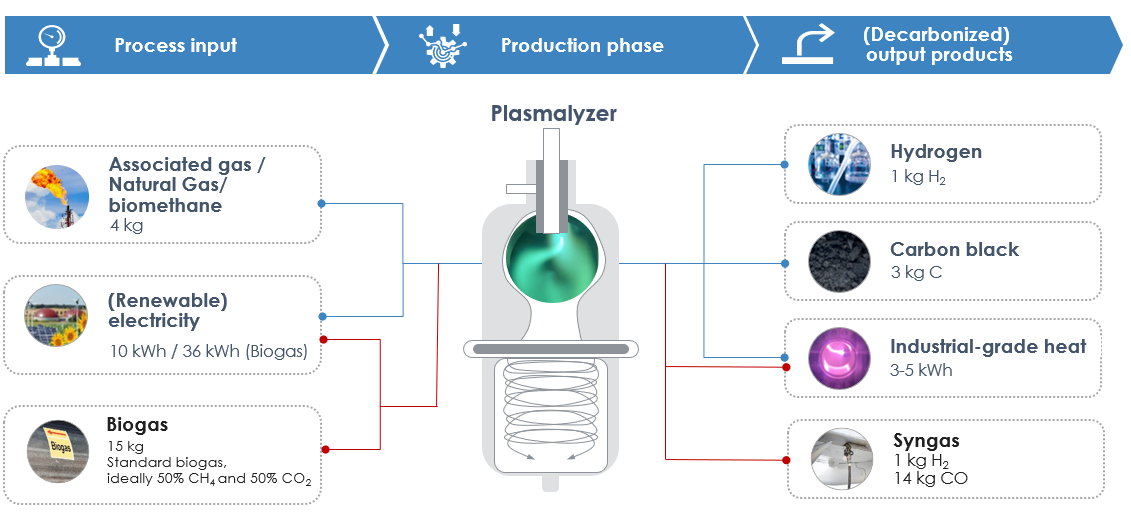
Plasma is created using two graphite electrodes in the plasma chamber (see 1). The feedstock used for the plasma is recycled hydrogen. Methane or natural gas is dissociated into hydrogen and solid carbon through heat and plasma electrochemical processes in a second separate chamber (see 2). It operates at temperatures between 1300°C and 1500°C. Approximately 98% of methane is converted within a short residence time of 200 ms to 500 ms.
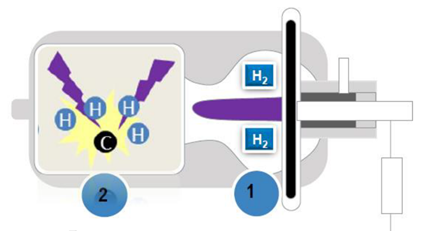
The Plasmalyzer features two advanced electrode systems that enable automated feed during operation. The inner electrode gradually wears out over time. An electrical interface connects the power supply to the plasma torch, providing stable and reliable energy input. One electrode system has an inner electrode with an operating time of approximately 100 hours before needing replacement. The other electrode system contains 18 electrodes in a cassette system that allows for continuous operation.
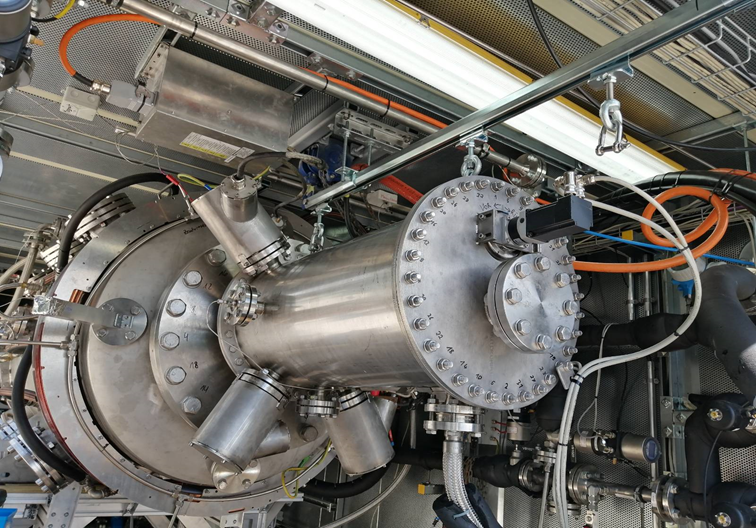
The Plasmalyzer can be modularly integrated into containers. An example configuration consists of five functional units: two Plasmalysis reactors for the breakdown of natural gas into elemental carbon (C) and hydrogen (H2), along with instrumentation and control (I&C) technology. A second container houses one Plasmalysis reactor, a blower to create the desired pressure in the system, and additional I&C technology. The produced hydrogen and solid carbon are separated by a Carbon Black separator, followed by carbon black compression using a screw compressor. The separated carbon black requires a receiving unit, vacuum transport system, loading, and filter system to be stored in a silo or silo truck. The Plasmalyzer produces hydrogen at atmospheric pressure. An additional container with a compressor, buffer storage, cooling water system, and heat exchanger is needed to supply hydrogen to a CHP (Combined Heat and Power) unit or a turbine.
Layout plan of a 0,5 MW Plasmalysis system in containers

The hydrogen can be used directly in hydrogen CHP units, boilers or SOFC fuel cells for CO2-free heat and power generation. This solution decarbonizes the energy industry. The solid carbon can be used as an industrial auxiliary material, for asphalt, concrete, cement or soil improvement, for example. This enables long-term removal of CO2 from the cycle and is thus exempt from the CO2 tax.
A carbon handling system is needed to make the carbon transportable. The system contains a filter system with a compression screw and a buffer storage. Outside the system boundaries there is also a pneumatic carbon conveying system a filling system and a container.
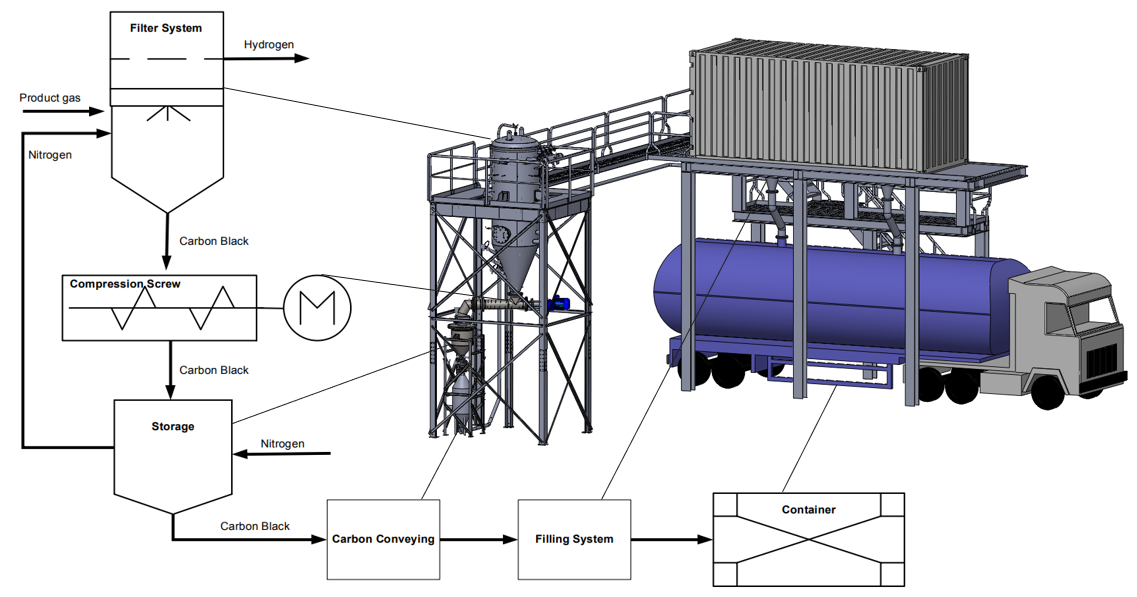
The Plasmalyzer can also be produced as a prefabricated unit mounted on a frame. This module is designed for direct on-site installation and commissioning without the need for extensive construction work. Typically, the module includes all necessary Plasmalyzer components such as the plasma module, magnet coil, electrode system, generators, pumps, sensors, valves, and hot gas piping. It allows for flexible scaling of the produced hydrogen and carbon quantities.
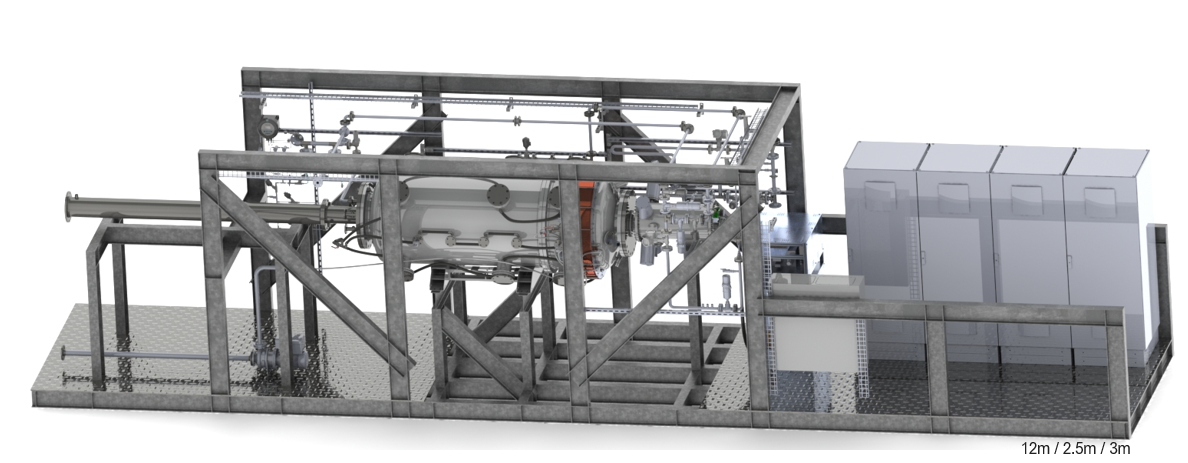 0.5MW skid module
0.5MW skid module
Combining the modules illustrates the layout of a 20 MW methane plasmalysis plant consisting of 40 connected 0.5 MW Plasmalyzer modules. These modules are interconnected to form a system capable of producing 2 tons of hydrogen per hour and 6 tons of carbon per hour. At the center of the plant, there are five carbon separation filters which are crucial for purifying the output. The separated hydrogen is then directed to a heat recovery steam generator, facilitating the production of steam. This setup effectively demonstrates the integration of modular technology in a large-scale industrial application, optimizing both space and efficiency.
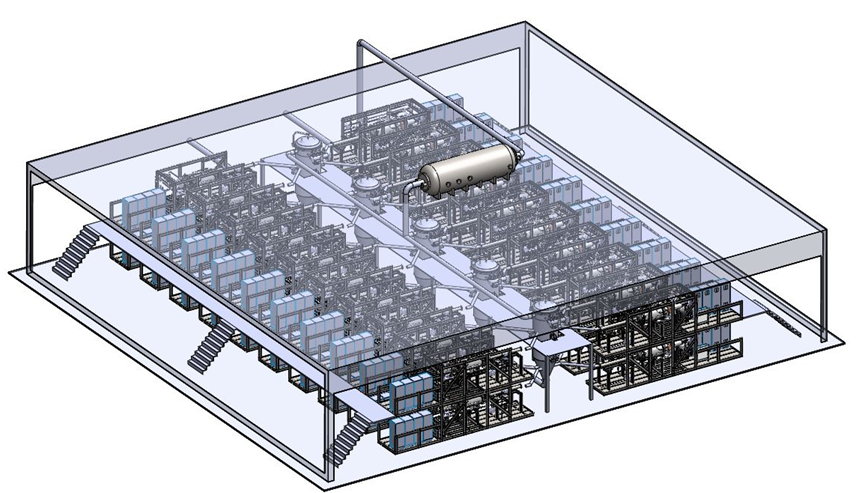
When biomethane is used, carbon dioxide is removed from the atmosphere through methane plasmalysis. Graforce thus offers the first marketable alternative to the controversial CCS storage of CO2 (Carbon Capture Storage).


